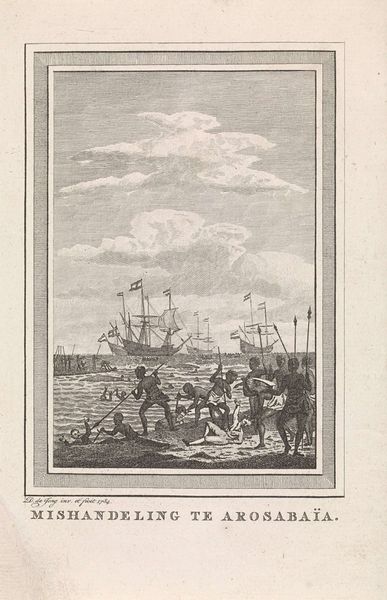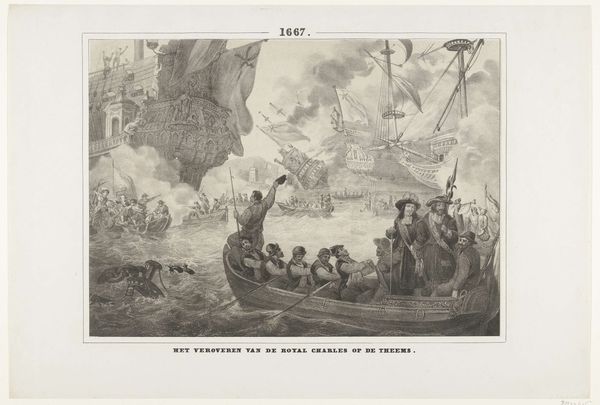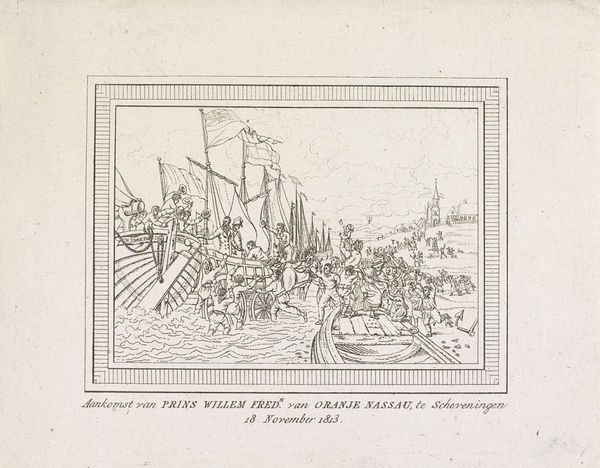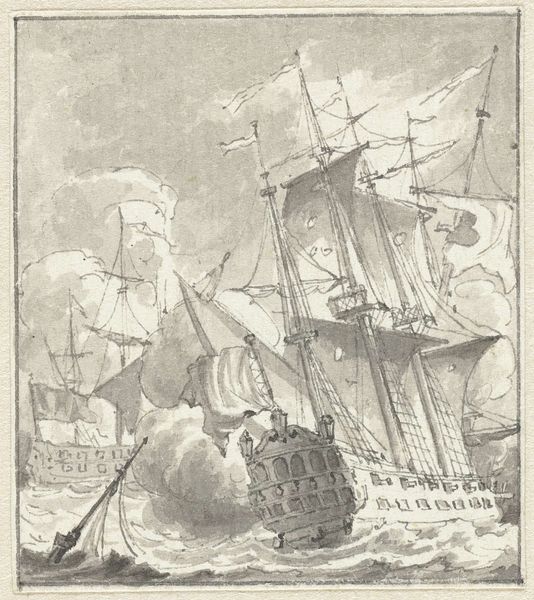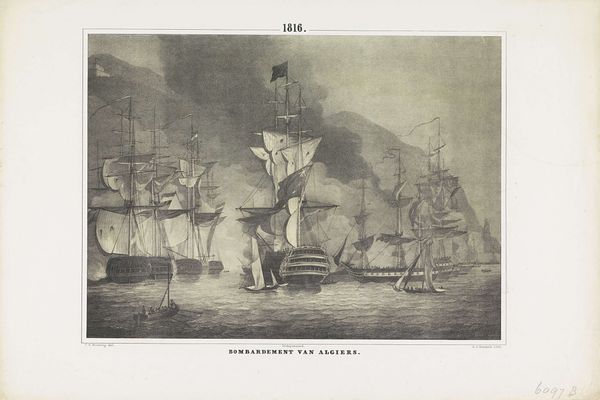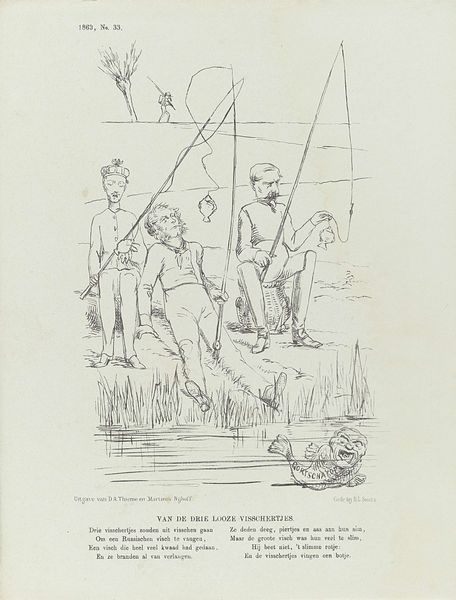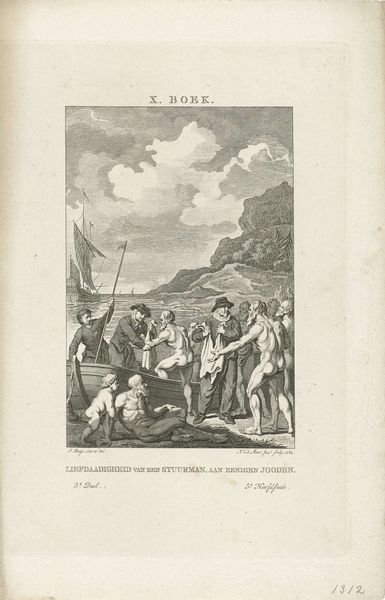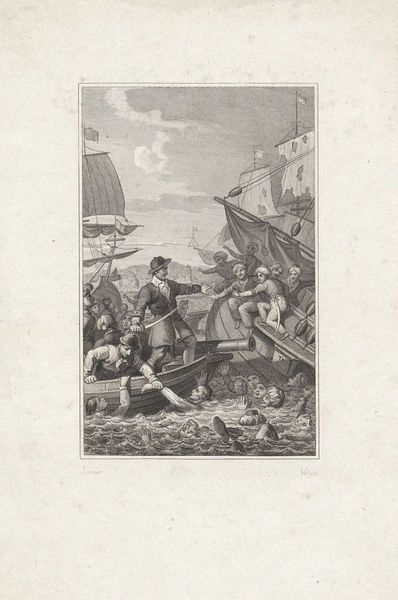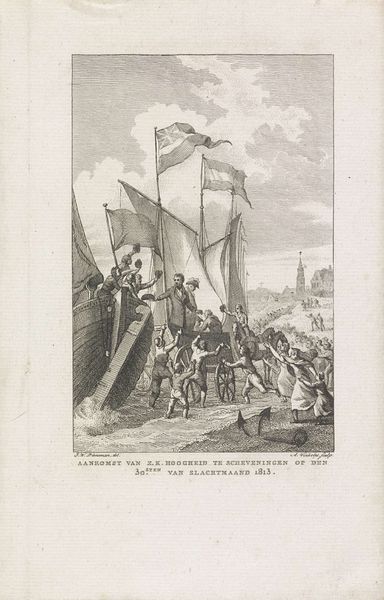
print, engraving
#
narrative-art
# print
#
old engraving style
#
romanticism
#
history-painting
#
engraving
Dimensions: height 241 mm, width 182 mm
Copyright: Rijks Museum: Open Domain
Curator: Here we have "Engelsen verlaten Walcheren, 1809," or "The English Leave Walcheren, 1809," a historical engraving crafted between 1809 and 1813 by François Anne David. Editor: My initial impression is one of cool detachment. The engraving technique lends a crispness to a chaotic historical event, which seems somewhat paradoxical. The somber blacks and grays underscore a moment of defeat, yet with restraint. Curator: Indeed, the means of production were likely very deliberate. Engraving is a craft demanding immense technical skill and the process would have taken considerable time, particularly in reproducing the intricate details of ships and figures. Editor: Agreed, and the socio-political context is pivotal. This artwork depicts the Walcheren Expedition, a disastrous British campaign during the Napoleonic Wars. It wasn't just a military failure, it was a humanitarian crisis with disease ravaging the troops. One has to consider the propaganda element— how did this representation shape contemporary perceptions of that campaign and Anglo-Dutch relations? Curator: Interesting point. I'm drawn to the formal aspects; look closely at the symbolic imagery. Above the scene, we see an eagle, possibly a French or Imperial eagle, watching over the withdrawal. This raises a question about its place between craft and fine art: was David intending it purely as historical document, or something more elevated in artistic terms? Editor: It goes beyond mere documentation, for sure. This visual narrative positions the French perspective triumphantly. Considering Romanticism’s fascination with emotion and nationalism, one has to ponder how this image feeds into emergent national identities. Curator: Let’s think about labor too: the labor of the engraver against the backdrop of the labor of soldiers, rowers, and even the hidden labour of those who built the ships or manufactured the ink. Editor: True. And it's critical to acknowledge the likely disparity in experiences between those depicted –the privileged officer gesturing authoritatively– versus those laboring at the oars or those left dying on the isle. The engraving, then, offers a stage for reflecting on social hierarchy, even within apparent defeat and triumph. Curator: Reflecting on the materiality and context deepens my understanding. It highlights the way production impacts narrative, something easily lost in a digital age. Editor: Absolutely, interrogating such pieces brings a consciousness not only of history, but also our modern relationship to it. These artifacts continue to resonate with socio-political dimensions for us to ponder and examine anew.
Comments
No comments
Be the first to comment and join the conversation on the ultimate creative platform.
